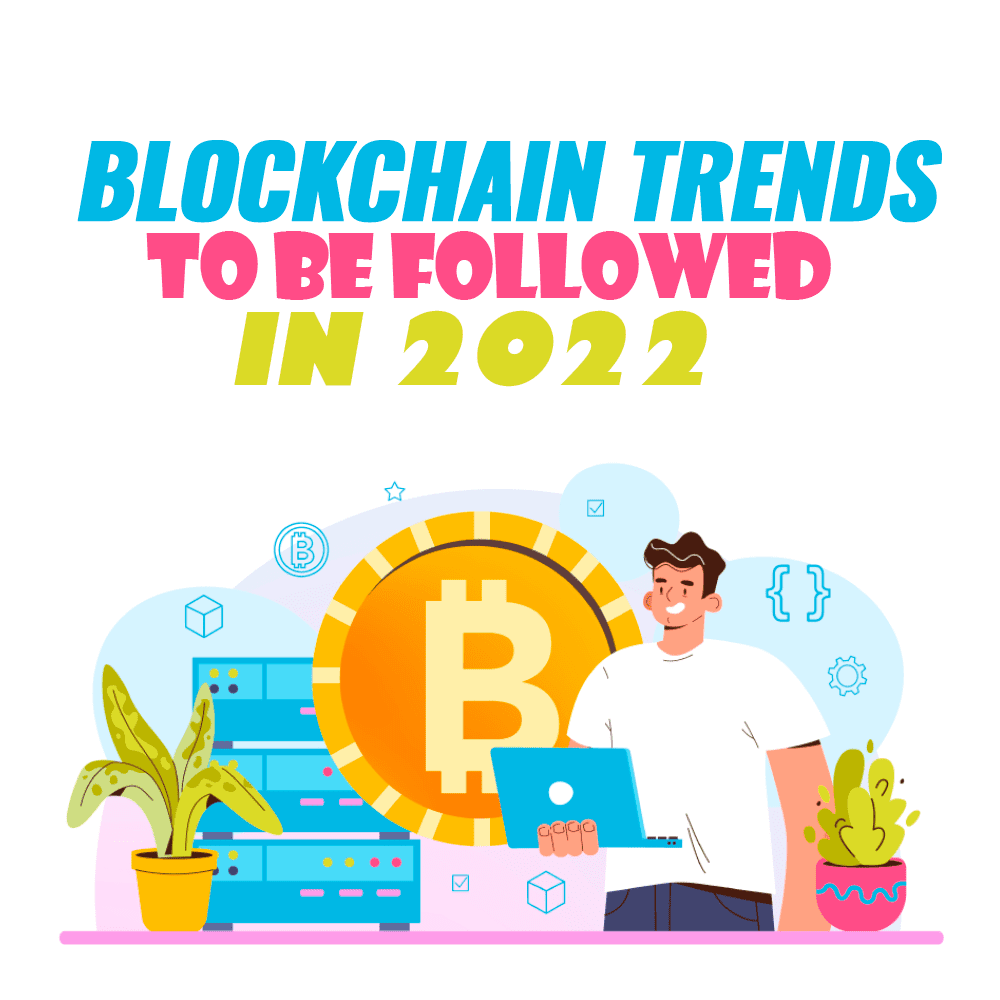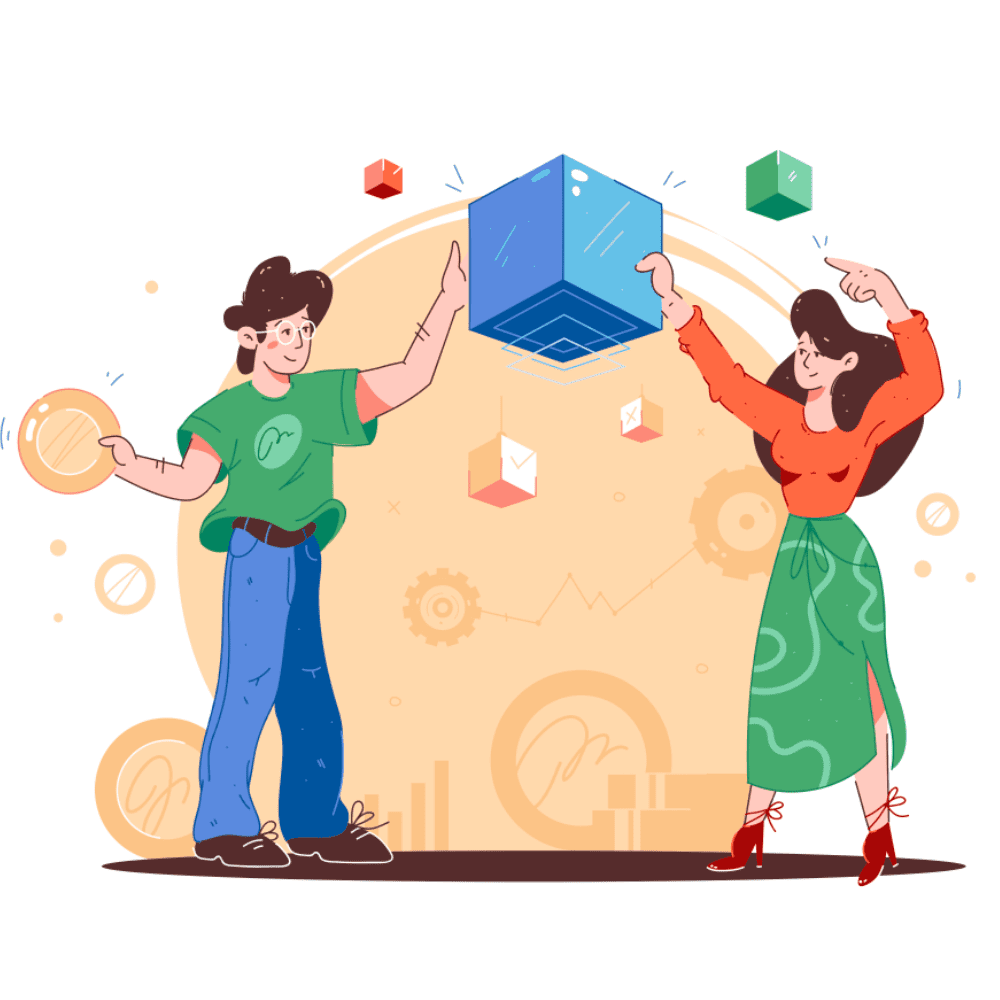 Blockchain, once only a daring experiment, has nowadays transformed into a revolutionary technology that is continuously evolving. As blockchain enhances the security, transparency, trust, and traceability of shared data, it has the potential to disrupt almost every industry.
Blockchain, once only a daring experiment, has nowadays transformed into a revolutionary technology that is continuously evolving. As blockchain enhances the security, transparency, trust, and traceability of shared data, it has the potential to disrupt almost every industry.
Some of those industries include financial, supply chain, logistics, automotive, health care, retail and consumer goods, and government. Although most of us know blockchain technology due to cryptocurrencies, that’s just one of its implementations. Blockchain has so much more to offer.
So in this article, I will offer you the basics of blockchain, what blockchain developers do, and what the top trends in blockchain technology to watch in 2022 are.
What Is Blockchain Technology?
Blockchain is a distributed, immutable ledger that facilitates the process of transaction recording and asset tracking in a business network. Virtually anything that is of value can be tracked, recorded, and traded using blockchain, as it reduces associated costs and risks.
The term “blockchain” refers to the chain that’s made up of blocks of data. When fresh data is added to the network periodically, a new block of data is created and added to the chain. And the way these new nodes or blocks are created is the reason why blockchain is considered highly secured.
Why, you might ask.
Well, the majority of nodes need to verify and confirm the validity of the new data before it can be added to the ledger. Each transaction in the blockchain is secured using cryptography (a method to protect information and communication from unauthorized access using encryption codes).
Blockchain is a valuable technology for industries that need the timestamp and value of a transaction to be recorded securely. Apart from that, blockchain can also be used for processes that involve tracking data movement between different parties, such as in logistics, trading, and supply chain.
Blockchain is ideal for delivering information with its immediate, transparent, distributed, and immutable ledger that can only be accessed by authorized users of the network. With a blockchain network, you can track production, payments, orders, accounts, and so many more.
What Does a Blockchain Developer Do?
A developer who is responsible for the development and optimization of blockchain protocols, architecture, smart contracts, and web applications using blockchain technology is a blockchain developer. Blockchain developers are categorized into two types:
- Core Banking Developers – They are responsible for blockchain architecture and protocol development.
- Blockchain Software Developers – They use architecture and protocols developed by core banking developers to build decentralized apps.
Simply put, a blockchain developer is responsible for designing the protocols, developing network architecture to be used for decentralizing or centralizing data, developing back-ends and front-ends, and developing and observing smart contracts.
They aim to develop creative solutions for challenging problems. As a blockchain developer, one also has to perform design, development, complex analysis, testing and debugging of the software that runs on blockchain technology.
Top Trends in Blockchain Technology

ERC Tokens
ERC or Ethereum Request For Comments is a document written using the Ethereum platform by smart contract programmers. The ERC document provides rules that Ethereum tokens must comply with.
ERCs are application-level specifications for Ethereum, like name registries, token standards, and library/package formats. ERC standards outline a required set of functions for a token type that permits smart contracts and applications to communicate with tokens.
Some of the popular ERC tokens are ERC-20 (standard fungible token), ERC 721 (standard non-fungible token), ERC 223 (Protecting users from Accidental Transfer of Contracts), ERC 777 (Operator Based Token Standard), ERC 1155 (Multi-Token Standard), and ERC 1337 (Recurring Subscription Standard).
ERC Tokens have become a trend in blockchain technology, as they offer pre-written standardization for the application and smart contracts built using the Ethereum platform. They simplify the process for developers, as they don’t have to write these standards on their own.
Ethereum
Ethereum is a blockchain-based platform that is open-source and decentralized. It is used to create a substitute protocol for developing decentralized applications, offering a different set of trade-offs that is highly useful for large decentralized applications.
The emphasis of Etherium remains on the situations where security, rapid development time, and effective interaction among different applications are essential.
With blockchain having a built-in automata programming language, Ethereum enables anyone to write applications and smart contracts. Put simply, Ethereum allows a developer to state the function of transition and create their transaction formats and arbitrary ownership rules.
Ethereum has become a trend in blockchain technology due to its universality, simplicity, agility, modularity, non-discrimination, and non-censorship.
NFTs
NFTs or Non-Fungible Tokens are tokens that represent the ownership of unique items. Non-fungible is an economic term that describes products such as arts, song files, or collectables that aren’t interchangeable with others due to their unique properties. So, NFTs enable us to tokenize these items and provide security by Ethereum blockchain while allowing one official owner at a time.
As everything has become digital, there’s an increasing need to replicate physical items properties like uniqueness, ownership proof, and scarcity. Simply, a single copy of a digital asset can be converted into an NFT and then sold, bought, or collected. An important thing to note here is that NFTs cannot be replicated, and as the name suggests, an NFT needs to be unique.
An NFT can be anything from GIFs to video clips, from works of art to collectables, and from concert tickets to a post on social media. Needless to say, NFTs have become popular in blockchain technology, as they’re transforming the perception we had for rights on digital work.
Blockchain-as-a-Service (BaaS)
Blockchain-as-a-Service or BaaS is a cloud service used for designing and executing smart contracts and decentralized applications in blockchain technology. BaaS is built as a software-as-a-service model and works likewise.
The emergence of BaaS means significant progress and is an important milestone in the landscape of blockchain, as it will accelerate blockchain technology adoption across businesses.
In simple terms, BaaS refers to third-party cloud-based infrastructure that will help developers to build, operate, and manage blockchain-based applications easily. BaaS also facilitates back-end operations for the blockchain platform. Some of the essential players in BaaS are Microsoft, Amazon, Paystand, and R3.
Stablecoins
Stablecoins are cryptocurrencies that are not volatile. They have a lot in common with Ethereum (ETH) but with a steady value similar to the traditional currency. Stablecoins are intended to be pegged as fiat money or cryptocurrency or to work as exchange-traded commodities.
Stablecoins are a hybrid of fiat and cryptocurrencies that offer the benefits of both real and digital assets. Stablecoin value is pegged at a 1:1 ratio to traditional currencies like euros, rupees, or dollars.
Besides, Stablecoins can also be supported by commodities like oil, metal, or gold. As Stablecoins are growing continuously and, unlike other cryptos, don’t crash frequently, they will be a popular trend in the blockchain space.
Decentralized Finance (DeFi)
Decentralized Finance (DeFi) is an open alternative to traditional financial systems like exchanges and banks through cryptocurrencies. DeFi is a system that makes financial products available on a public decentralized network of blockchain.
In particular, DeFi refers to a system where blockchain software makes it viable for sellers, lenders, buyers, and borrowers to communicate peer to peer or with a rigidly software-based middleman instead of an institution or company facilitating those transactions.
With the potential to outperform banks in insurance, loans, and currency exchanges, DeFi platforms have become a trend in the blockchain industry. Another reason behind the popularity of DeFi is the ability it offers to the users to interact with one another without intermediaries demanding their shares.
Central Bank Digital Currency (CBDC)
Central Bank Digital Currency or CBDC is the virtual fiat currency format designed for a specific region or nation. It’s a digital token of the official currency powered by blockchain but issued and regulated by the authorities of monetary. For instance, in India, the government has introduced a bill to originate its digital currency, while the Central Bank of Nigeria is proposing to launch a CBDC pilot on Hyperledger Fabric blockchain.
Other countries like Thailand, England, China, Sweden, Canada, and Uruguay are looking to try the concept of CBDC as well, making CBDC an important trend in the blockchain market.
Verifiable Credential (VC)

The identity information of someone is stored on a public blockchain and can be shared securely with the desired person with cryptographic keys to access the information. A verifiable credential might include information related to identifying the subject, issuing authority, type of credential, constraints on the credential, and more.
With the addition of tech such as digital signature, VC becomes more tamper-evident and reliable than its physical equivalent. It allows a user to share their verifiable credentials without giving up their privacy. With VC, no company or institution can store or control information centrally, as a user can revoke credentials at any time, making it a significant trend in the blockchain industry.
Self Sovereign Identity (SSI)
Self Sovereign Identity or SSI are digital identities maintained in a decentralized way. In SSI, the public identifiers of identity are stored in the blockchain and are operated by different independent servers that protect individuals from tampering.
SSI allows a user to self-manage the digital identity without being dependent on a third-party provider. With SSI, one can easily establish trust in interaction by presenting credentials to other parties who can then verify whether the credentials came from the trusted issuer or not.
Hybrid Blockchain
Hybrid blockchain is an amalgamation of the benefits that both private and public blockchain offer. With hybrid blockchain, one can employ a public blockchain to make the ledger accessible to the public and a private blockchain running in the background that controls the access of modification in the ledger.
A hybrid blockchain can help in leveraging smart contracts, auditability, and better performance while providing transactions for enhanced verifiability and transparency. The member of the hybrid blockchain can determine who can partake in the blockchain or which transactions are made public.
Blockchain Is the Future
Looking at these top trends in blockchain, you can easily guess that the upcoming year, 2022, will be a significant period for the adoption of blockchain in various sectors.
And being a developer, it becomes important for you to learn about these trends in blockchain technology and prepare yourself for the changes. Moreover, learning some of these trends will be beneficial for boosting your career as a blockchain developer as well.
